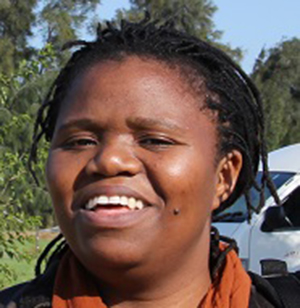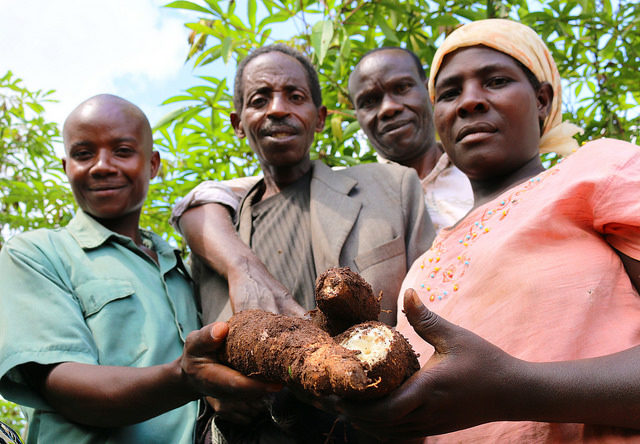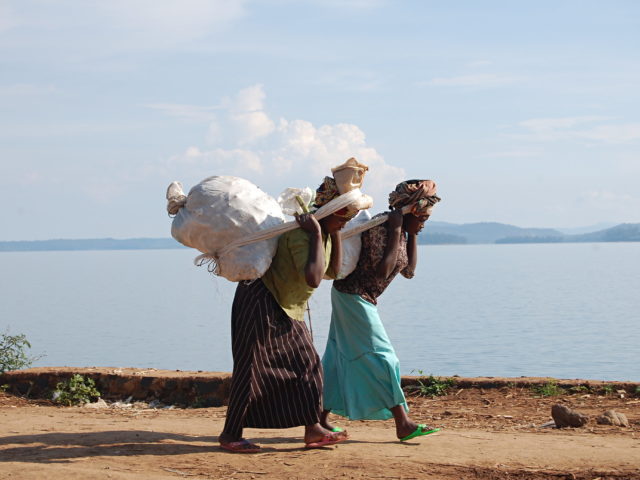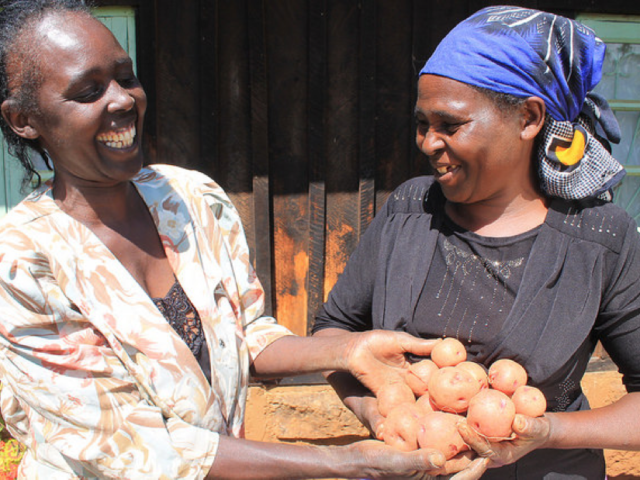Netsayi Noris Mudege, an anthropologist from Harare, Zimbabwe, has been the Gender Focal Point at the International Potato Center (CIP) and the Gender Coordinator for RTB since May of 2013. Before joining RTB, she was a gender advisor at the Royal Tropical Institute (KIT), in Amsterdam, Netherlands. Before that, she was an Associate Research Scientist at the African Population and Health Research Center (APHRC), in Kenya. She has a PhD in rural development from Wageningen University, in the Netherlands, and degrees in sociology and social anthropology from the University of Zimbabwe. She is playing a central role in efforts to mainstream gender across the RTB centers and programs.
Question: Why is gender important for a research program like RTB?
The goal is that our interventions improve women’s lives as well as men’s lives, so we have to be extra careful that both men and women benefit from the work we are doing. For example, if women are making their living peeling cassava and a project introduces a peeling machine, then the women may loose their income, and men may be the only people who benefit it. The machine isn’t necessarily bad, but the way that it is introduced to the community may be. So the project needs to be designed in such a way so that women can take advantage of it, so their lives are also improved.
Q: What are you doing to make RTB more gender sensitive?
One of my first duties as gender coordinator for RTB was to ensure that gender work was coordinated across the four CGIAR centers, so that we are working together toward a common goal. The RTB gender strategy was completed before I joined and one of its goals is to mainstream gender within RTB research. So one of my first duties was to make that strategy operational. I contacted all the focal points and designed a gender capacity building plan, which they contributed to.
The reason we began with capacity building is that we realized that in RTB there wasn’t enough capacity to integrate gender into research. We got a lot of requests from scientists at the different centers for help in including gender in their proposals, but the gender focal points became overstretched. So we decided to help the scientists gain basic skills in integrating gender into their work.
Q: How well has that gone?
I think we’ve had a lot of success, primarily in building capacity for gender research. Our capacity building program has already worked in three regions – Latin America, Africa and Asia – and is being led by the gender focal points at each RTB center. Last year, the RTB centers ran gender training courses in Colombia, Uganda and Bangladesh.
In Colombia, for example, we began with gender awareness training introducing gender concepts through presentations. The next day, we took the researchers who participated in the training into the field to apply the things they’d learned the day before in a practical setting. We gave them a tool, known as an activity calendar, which they used to ask the farmers what they do each month and season related to agriculture and which tasks were done by men and which by women. This gives an idea of how an intervention will affect different people in a production chain. In Uganda, we followed more or less same format as in Colombia, but in Bangladesh, we were unable to go into field because of political unrest.
Q: Is there gender research going on in RTB?
Last year, we developed a proposal for supplementary RTB funding for integrating gender into a number of on-going technical projects. There is already gender responsive research underway in Bangladesh, Bolivia, Cameroon, Colombia, Ecuador, Peru, Malawi and Uganda. I’m conducting research on gender integration in two CIP projects in Malawi funded by Irish Aid, one on potato and one on orange-fleshed sweetpotato. My main focus is on gender integration in potato and sweetpotato seed systems.
Sometimes it is assumed that simply by participating in a nutrition-oriented agricultural program such as the introduction of orange-fleshed sweetpotato (OFSP) with high beta-carotene content, you are already addressing gender issues. However, it is possible that women aren’t benefitting as much as they could. We carried out research on the project ‘Rooting out Hunger in Malawi’ through Orange-Fleshed Sweetpotato, which assumes that women and children will benefit if they eat more OFSP, because they’re getting more vitamin A. This is true because many women and children in Malawi suffer from vitamin A deficiency. But when we looked at a component such as multiplication of the vines for planting OFSP, we found that this was done mainly by men and they were earning income from selling the vines. So maybe we need to work with organizations that can mobilize women for vine multiplication training or other improvements. This is what the project is moving toward – they’re now trying to motivate women to participate in vine multiplication.
This research also served as a training exercise for CIP staff in Malawi. I also hope to work with two of the people who were in the field on the analysis of the data, so that they can develop that capacity.
Q: It sounds like RTB is becoming more gender inclusive.
Oh yes. The scientists are becoming more responsive and are approaching us to ask for help when they begin to design a project. We have support from the highest levels of RTB. They sent out a project design memorandum that gender should be integrated into all proposals. So there is high-level support, which should help us to make some strides with gender.
Researchers realize that gender needs to be included in many types of agricultural research. We’ve provided suggestions on how to do this for new, large scale “flagship” projects that are being developed. But we still face challenges. Gender is still seen by some scientists as “an extra” which can be included only if additional funding is provided What we try to explain is that if you include gender in a project when you design it, it won’t add costs and you can achieve more significant outcomes more efficiently. But if you design a project without considering gender and then you want to add this component later, that can increase the cost. So it is important to include gender from the very beginning.
Interview by David Dudenhoefer



